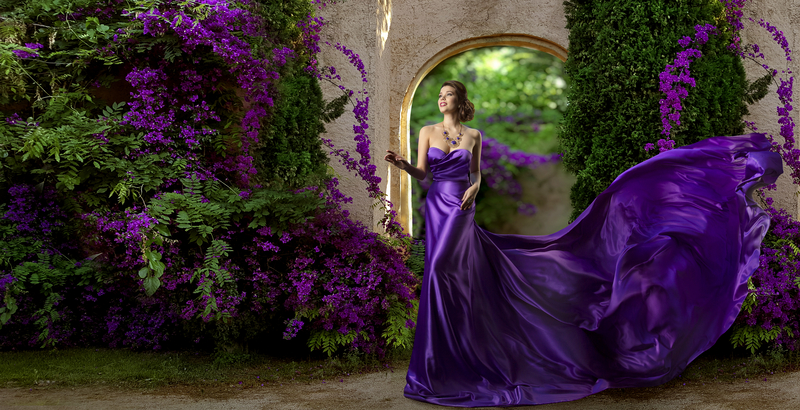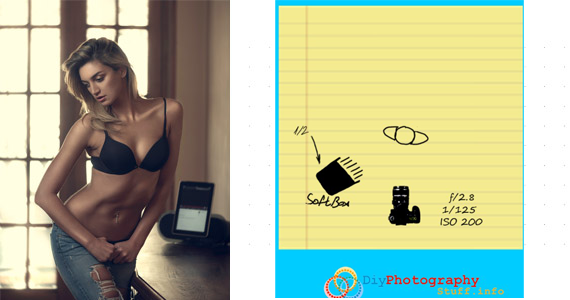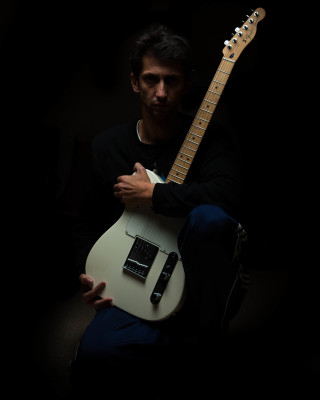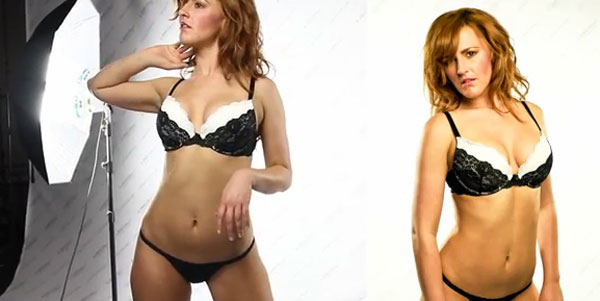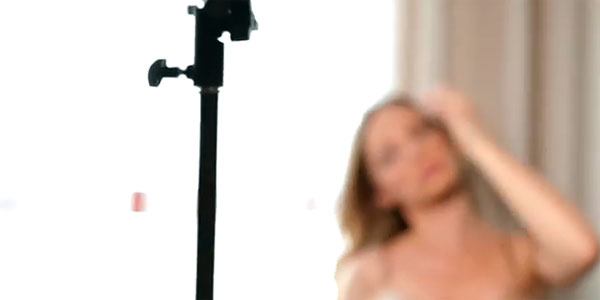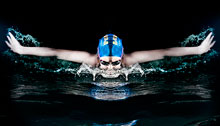Fashion photography is all around us. Fashion photography incorporates a range of styles. This concept involves product, portrait, and even fine art photography.
Fashion photography is all about narrating a story. When it comes to how you tell it, the alternatives are unlimited. The best aspect is that you may change the narrative at any time. There are no restrictions other than having a storyline in mind.
It is a fast-paced job that is always evolving and dynamic. When we talk about fashion photography, we don’t just mean models in cosmetics; we’re talking about photos, postures, lighting, beautiful locations, and garments.
In this discussion, we’ll provide you with the fundamental knowledge you’ll need to take the next step in this wonderful field of photography. However, before you undertake your first fashion shoot, you need to pick which aspect of fashion you will focus on and what factors to consider.
Let’s get started.
Camera and Equipment
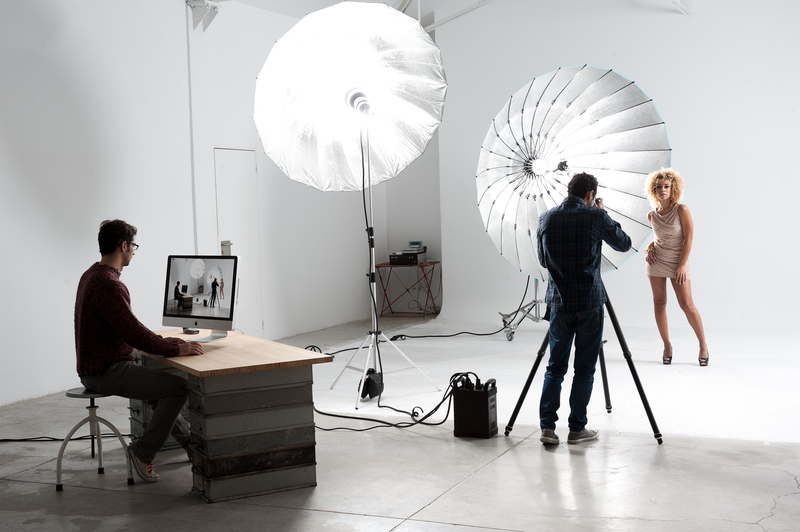
In fashion photography, camera equipment is crucial. However, it is entirely dependent on what you intend to do with the final photographs. Are they for publication?
Will they be blown up and shown on building sides? Is it solely to be displayed on social media for the online world?
All of these considerations have an impact on your equipment requirements. If you’re serious about fashion photography, you’ll want to opt for full-frame or medium-format cameras with higher resolution. There is no such thing as a perfect camera in photography, as there is in most other fields. However, there may be a camera that is ideal for the type of fashion photography you want to undertake.
It is best to use a DSLR camera. Fashion photography can be done using a point and shoot at first, but you should upgrade as quickly as possible to a DSLR.
When you first start, a medium zoom lens in the 18mm–200mm range would suffice. You might choose to start with prime lenses that have a shallower depth-of-field. The 50mm f/1.4 or similar is a cheap prime lens that you might wish to consider for fashion work.
There are a few more things you’ll need in addition to your camera and lenses. There’s a good chance you won’t only be shooting in the studio. Another logical location to capture would be a fashion show. A monopod is extremely useful in this situation. If you don’t have room for a tripod, this is a wonderful alternative.
Fashion photography also involves the use of diffusers and external flashes. Furthermore, using a battery grip would be quite beneficial.
Lighting
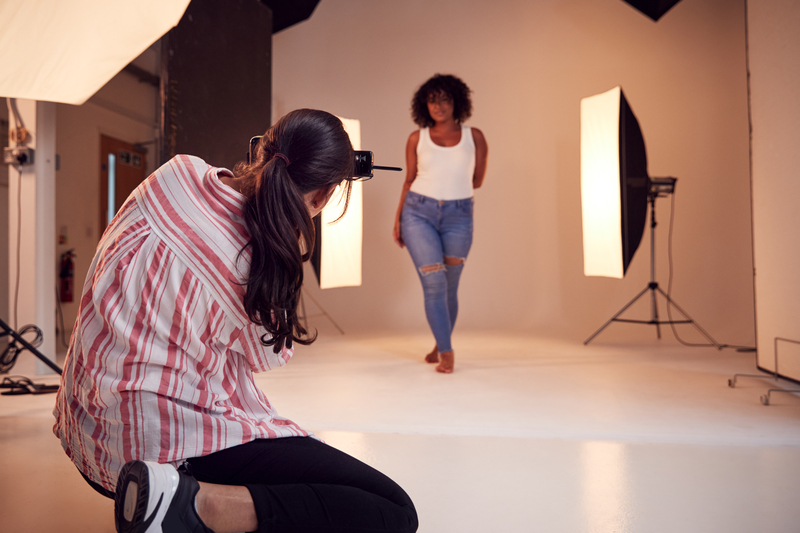
Lighting is one of the most important aspects of a fashion shoot for the photographer to perfect. In fashion photography, lighting is one of the most critical factors to consider. Photographers must master what is entering the camera, from brutally illuminated summer beach vistas to studio sessions with five strobes and color gels.
Because fashion photography frequently uses direct lighting, a lot of fancy lighting equipment isn’t usually required to get started. However, in fashion photography, understanding lighting terminology such as backlight, bounce, catchlight, high key, loop lighting, and spill light is critical.
The fashion image is made or broken by the lighting. Regardless of the conditions, the photographer must be able to achieve the visual style that the production manager desires.
The majority of fashion photography is done with high-key lighting techniques that reduce shadows and contrasts. Shadows must be properly handled in low-key photographs to complement the model and the outfit. In contrast, black and white fashion photography is very crucial.
Experienced photographers should have access to and experience with as many lighting alternatives as feasible to pull off all of this. Use all of the tools at your disposal to tame, produce, or manipulate the light to your liking.
Find the Apt Models
For your upcoming photoshoot, you have a vision in mind. You’ve settled on a location, a wardrobe, and a theme. The next step is to locate the ideal subject. Finding a suitable model for your forthcoming fashion photography assignment can be challenging since there are numerous methods to limit down your options until you find the person who will best represent your artistic vision.
You can contact a variety of agencies about hiring models for fashion shoots, and you must work with a model that is enthusiastic about your ideas and brief, as this will help bring your concepts to life. The cost of hiring models varies depending on the agency you use.
Even in professional fashion photos, models rarely begin with the outrageous. Start each session with some simple portraits and see where it takes you. The photographer and model must become acquainted with one another and build a rapport with the camera. Practice standing, sitting, and reclining poses that are appropriate for the situation. After that, have the model move about and take some action shots.
Poses
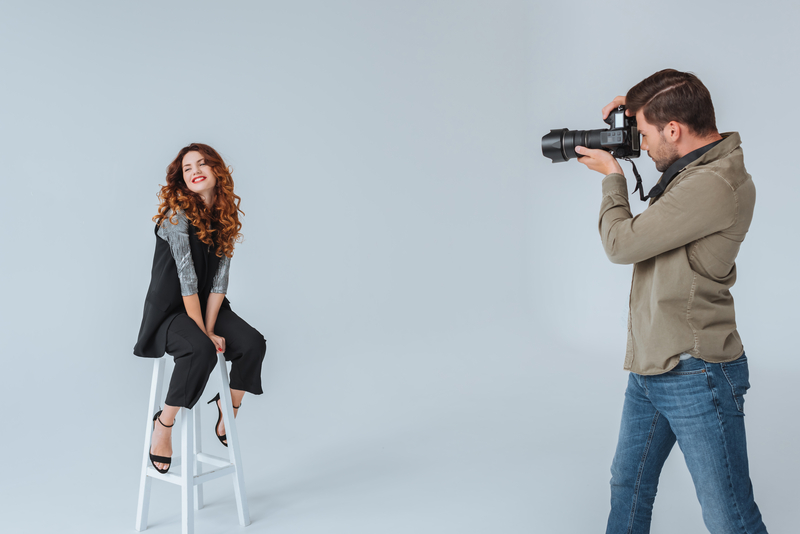
Poses that connect the model to the background and props are the finest. How can you get your subject to interact with his or her surroundings? Rather than having your model lean against the exotic sports car, photograph them as they enter or exit.
Another great approach to get your model to strike natural stances is through roleplaying. It helps to break the ice and relieve stress, and it encourages your subjects to enjoy themselves.
Movement is a crucial component in fashion photography. The image’s serenity is broken by movement, which gives it a finite feeling of time. You can either have your model move or have anything in the frame move with some action shots.
Look at different objects that can move in the frame for shots when you want the model to be motionless and crisply focused.
You may need to make a few retakes when placing them in scenes and having them interact with the environment and items. Examine the photographs on the back of your camera to ensure that the lead lines, body forms, and presentation of the clothing are to your liking.
When it comes to posing models, there are a few pointers to keep in mind. It’s crucial to ensure that limbs are bent for a comfortable look, that hands are not in fists, and that hands are not in pockets when posing. The dynamism of an image is often affected by where a model is looking. Having their gaze beyond the camera, perhaps at you, is usually helpful, depending on the perspective of the shot.
Create a Narrative and Supportive Elements
You want your composition to tell a story, even if it’s only one gorgeous image for a marketing campaign. Clothing is important, but it’s far more about how you go about creating the image. For example, It’s more than just a picture of a model on a beach; they’re a local surfer out early in the morning catching waves. It’s not a model resting on a VW microbus; it’s a young individual living “van life,” traveling to far-flung destinations, and enjoying life to the fullest.
Aside from clothes, makeup, and hairstyle, the photographer has complete control over two other image aspects. They can either add to the narrative or undermine it. The idea is to create a unified composition with a message for the viewer.
The first and most important tool is the location. You can include the background in your article. Summer days evoke feelings of the beach, City streets give the scene a more metropolitan vibe. Mountains are associated with winter sports. It’s all very self-evident, but there’s still plenty of opportunity for creativity. Whatever you choose, make sure it complements the model’s outfit and features.
Another approach to aid in the telling of your story is to use props. The beauty of using props in fashion photography is that you may express yourself much more freely than you do in other types of photography. In fashion, you are making stories, as opposed to portraiture, where you tell the story of a person. It doesn’t have to make sense; all it needs to do is catch people’s attention.
Shooting
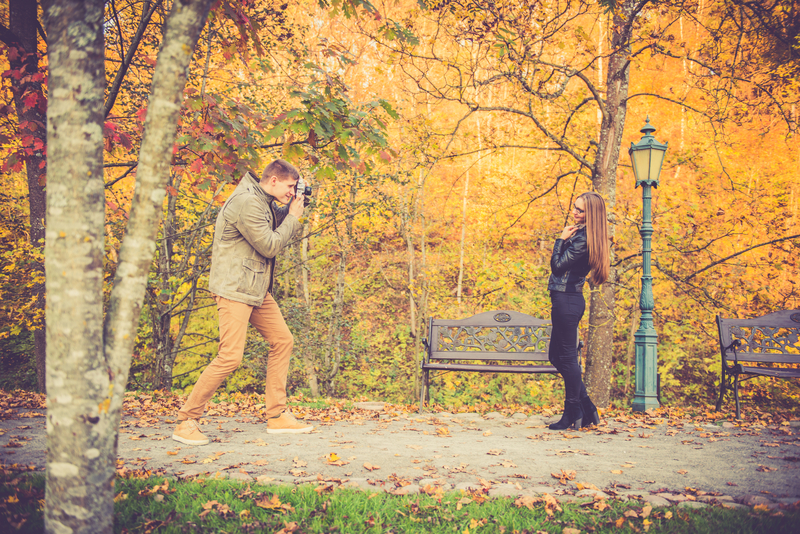
Changing the camera angle is one of the most effective techniques to create a whole new atmosphere. Getting low and shooting up, or getting high and shooting down, are two options. Toss your views off balance by tilting the horizon. While none of these solutions can substitute proper composition, a shift in viewpoint can give a tired image a new lease on life.
Fashion photography can be difficult to shoot. Finding the ideal person to photograph and then positioning the model takes a lot of time and effort. When the time comes, you must arrange your crew (if you have one). Maintain a positive attitude while managing the model and their personality for several hours.
To keep your composition neat, there are a slew of other pointers that might help you. Lead lines are useful in fashion because they may be used to highlight items such as specific clothing or accessories such as watches and hats. Modeling requires symmetry, both in terms of the model’s position in the frame and the overall composition. Subjects should be balanced with white space.
Compositional balance is a recurring element in good photography. Reflection photos are a great example of asymmetrical and balanced images. By balancing photographs with a second model or props or landmarks, you can do this.
When you want to throw your viewers off, an asymmetrical and ill-balanced image is perhaps the best way to do it.
It’s mentally and physically taxing. After that, there’s the editing, which can take a long time though with a few fashion photo editing tips and techniques you can make your work a lot easier.
Nonetheless, your efforts will be rewarded, and you will be pleased with the outcomes as well as the money you earned.
Photo Editing
Editing is about thoroughness, whereas capturing images is about strategy and intuition. The choosing procedure is crucial in and of itself. Some photographers have a good eye, but they don’t always make the best choices or haven’t found out the finest techniques in fashion photography editing.
Use Adobe Lightroom to Edit and Adobe Photoshop to retouch.
Examine your images with a critical eye and select the ones that deserve to be edited. You could snap 100 pictures and edit only 40 of them. After that, you may use Lightroom to do simple tweaks with tools like Tone Curve before going on to Adobe Photoshop for retouching.
Using the Sponge tool to adjust the saturation.
The Sponge tool in Photoshop is an excellent tool for bringing out the color in specific sections of your photos. You can, for example, bring out the green in someone’s pullover without overpowering their skin tone.
Keep in mind, though, that fashion photography is all about being inventive, artistic, and creative. You’ll be able to learn things quickly once you’ve mastered these three skills.
You can always seek professional help for editing, as it will steal a good amount of time. In this way, you can concentrate on your core work, photography.

